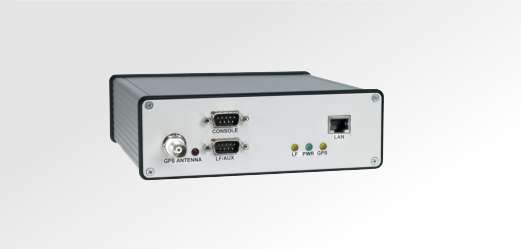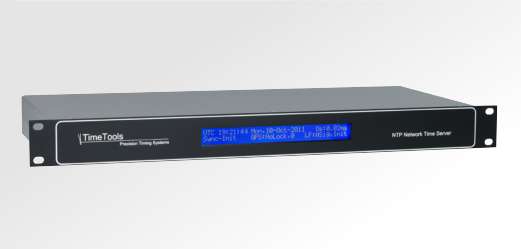It is generally recognized that a time server is an appliance used to synchronize time on a PC or computer network. The device will generally obtain accurate time from an external reference and provide a precise time resource for computers.
Synchronization of computers and computer networks can be a critical concern for many organisations. Where distributed computers are providing transaction processing, data logging or event logging and control systems, synchronization can be of critical concern. An accurate reference is therefore crucial for many organisations to ensure correct synchronized operation of their computer systems.
Time servers generally fall into two categories: serial/USB devices or network attached devices.
Serial / USB Time Server
Serial / USB clocks are connected to a single PC via a RS232 or USB port. They communicate with the host computer via this connection. They are mostly used to synchronize time on a single PC. However, they also can be used to synchronize an entire network using the host PC as a master time reference.

Figure 1: TimeTools LC Series Serial/USB Time Reference
These devices require software drivers to be loaded on to the host computer to configure and process timing information received from the time reference. The driver will periodically read timing information from the device and adjust the system clock of the host computer. More complex drivers will also allow other computers on the local network to synchronize with the host.
Network Time Appliances
Network attached devices have one or more network ports and reside directly on an Ethernet network. They synchronize time clients over the network. In this manner, a single device can synchronize anything from a single PC up to tens of thousands of clients. They can be used to keep the system clock on small or large networks locked to a single reference.

Figure 2: TimeTools SR Series Network Time Server Appliance
They have a number of advantages over serial/USB devices. They generally do not require any additional software or drivers to be installed on the client. Generally, they can synchronize much more accurately than a standard PC. They utilise dedicated hardware that tends to be much more reliable than PC hardware. They also utilise flash drives, rather than relying on less reliable hard drives. They can also utilise low-power processors, which run cooler, consume less electricity, which again aids reliability.
Reference Clocks
Time servers need to obtain accurate timing information from an external reference. The two most widely used time references are radio and GPS. Radio time and frequency broadcasts are funded and generated by regional government bodies. They are generally limited in range to national boundaries.
GPS is the timing reference of choice. The Global Positioning System is a satellite-based system designed primarily to provide worldwide positioning and navigation. However, it can also provide very precise time. It has a number of advantages over radio-based systems. It is available worldwide and is much more accurate than radio broadcasts. All that is required is that the antenna has a reasonably good view of the sky. In fact, many modern GPS receivers can even operate with an indoor located antenna, with no direct line of sight.
Most network based appliances use the Network Time Protocol (NTP) to synchronize clients. However, the Precision Time Protocol (PTP), though not widely used, is becoming more and more popular for specialist applications. Most modern operating systems, including Windows, Linux and Unix have NTP or SNTP clients built-in.
Backup Reference Clocks
Many time server systems also offer a backup reference clock that can be used in the event of loss of primary reference signals. These back-up clocks are based on TCXO, OCXO or Rubidium technology. They offer more precise timekeeping than standard crystal oscillators found in PC’s (and clocks and watches) and maintain an accurate time for a longer period until the primary reference comes back online. For many applications a backup reference clock is crucial to maintain operation in the event of GPS or radio signal loss.
Packaging
Most computer timing equipment is provided in 19-inch rack-mountable enclosures. Desktop and DIN-rail mounting enclosures are also popular. An enclosure is generally available to suit most purposes and requirements.